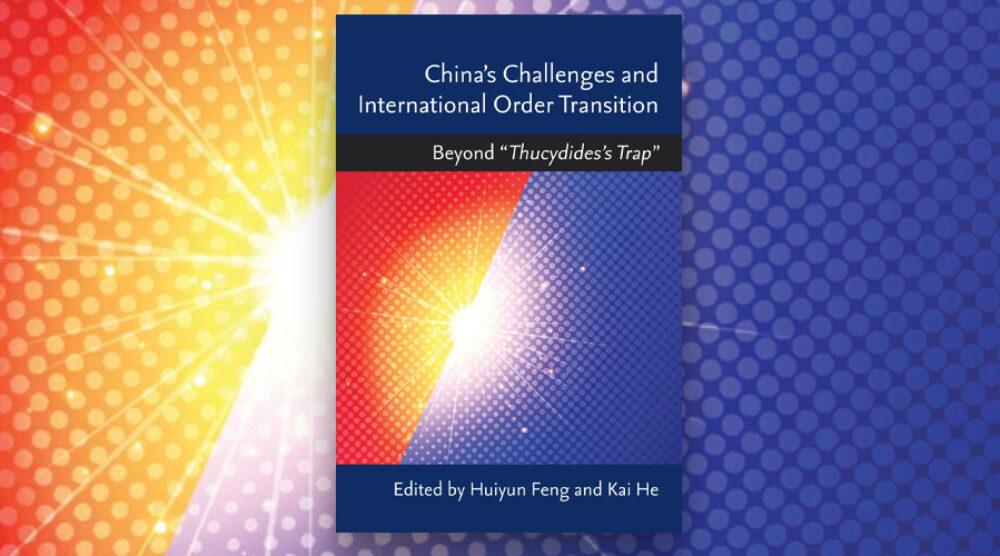About twenty years ago, scholars heatedly debated: “Does China Matter?” (Segal 1999). Now, the whole world is wondering: “How does China matter?”. Since the 2008 global financial crisis Chinese foreign policy has turned more “assertive”. In the next decade or two, China’s challenges to the existing international order seem inevitable in both economic and military respects. Meanwhile, the Trump Presidency in the United States seems to put the existing international order at stake by withdrawing from the Trans-Pacific Partnership (TPP) and the Paris Climate Agreement. Interestingly, according to Xi Jinping’s 2017 Davos speech, China seems to seek a leadership role in promoting globalisation and even protecting the existing international order.
Will China be a challenger or a protector of the international order? Will the United States give up its leadership in globalisation? Is the liberal international order over with Trump’s “America First” presidency? How to understand the new dynamics among China, the United States, and the international order has become an imperative task for both policy makers and academic scholars in the Asia Pacific.
By inviting leading International Relations (IR) scholars in both China and outside of China to exchange views and debate China’s roles in the international order, we edited a volume entitled China’s Challenges and International Order Transition: Beyond “Thucydides’s Trap” published by the University of Michigan Press in 2020. This edited volume offers new perspectives on these questions regarding the rise of China and its implications for the US-led liberal order.
It introduces an integrated conceptual framework of “international order” categorized by three levels (power, rules, and norms) and three issue areas (security, political, and economic). Each contributor engages one or more of these nine analytical dimensions of international order to examine two questions: (1) has China already challenged this dimension of international order; and (2) how will China challenge this dimension of international order in the future?
The contested views and perspectives in this volume suggest it is too simple or naive to assume an inevitable conflict between China and the outside world during a potential order transition into the future. With different strategies to challenge or reform different dimensions of international order, China’s role is not a one-way street. Instead, it is an interactive process in which the world may change China as much as China may change the world. The multidimensionality of international order technically enhances the durability and sustainability of the current international order against a rapid or radical transition into the future.
The aim of the book is to broaden the debate beyond the “Thucydides Trap” perspective currently popular in the West. Rather than offering a single argument, this volume offers a platform for scholars, especially Chinese scholars vs. Western scholars, to exchange and debate their different views and perspectives on China and the potential transition of international order.
This book is unique in three ways. First, this book features debates between Chinese scholars and foreign scholars over three thematic issues: (1) the power transition between the United States and China as well as the future regional order in Asia; (2) China, multilateral institutions, and future global governance; (3) Chinese culture, norms, and order transition. Readers will be fascinated by the different views and perspectives among scholars, especially between Chinese and Western scholars.
Second, this book is about China, but its scope also extends beyond China. All of the contributors examine China’s rise from an external international relations perspective, i.e., through an “outside-in” approach that complements existing scholarship from an internal approach by specialists on Chinese domestic politics and China studies. Third, this book treats China’s rise as a case study in advancing our theoretical understanding of international order transition or transformation in the future. Through contested analytical perspectives, the contributors of the book have drawn different paths and pictures of possible order transition as well as the shape of the future international order in the region.
This edited volume is part of a three-year project, “Understanding China’s Rise through the Eyes of Chinese IR Scholars,” funded by the John D. and Catherine T. MacArthur Foundation (Grant No. 16-1512-150509-IPS). It is also supported by Australian Research Council Future Fellowship (FT 160100355).
For more information on China’s Challenges and International Order Transition: Beyond “Thucydides’s Trap” please see here.
AUTHOR
Huiyun Feng is Senior Lecturer at the School of Government and International Relations, Griffith University.
Kai He is Professor of International Relations at the Griffith Asia Institute and the Centre for Governance and Public Policy, Griffith University.








